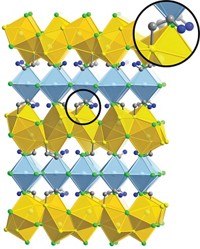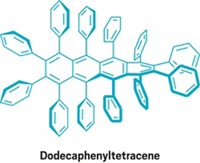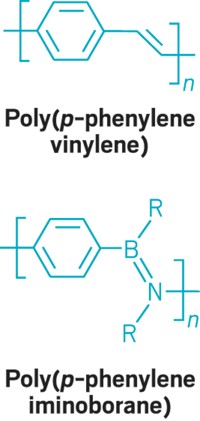Advertisement
Grab your lab coat. Let's get started
Welcome!
Welcome!
Create an account below to get 6 C&EN articles per month, receive newsletters and more - all free.
It seems this is your first time logging in online. Please enter the following information to continue.
As an ACS member you automatically get access to this site. All we need is few more details to create your reading experience.
Not you? Sign in with a different account.
Not you? Sign in with a different account.
ERROR 1
ERROR 1
ERROR 2
ERROR 2
ERROR 2
ERROR 2
ERROR 2
Password and Confirm password must match.
If you have an ACS member number, please enter it here so we can link this account to your membership. (optional)
ERROR 2
ACS values your privacy. By submitting your information, you are gaining access to C&EN and subscribing to our weekly newsletter. We use the information you provide to make your reading experience better, and we will never sell your data to third party members.
Materials
ACS Award For Creative Research & Applications Of Iodine Chemistry
by Glenn Hess
February 4, 2013
| A version of this story appeared in
Volume 91, Issue 5
Sponsored by SQM S.A.
There is a rich future for iodine in materials chemistry based on the pioneering work of Nancy S. Goroff, an associate professor of chemistry at Stony Brook University in New York state.
Her accomplishments “illustrate that chemistry can still surprise us and that, if we are clever, we can exploit the surprises to enrich our knowledge and to produce new chemical science,” says Kathlyn A. Parker, a professor of chemistry at Stony Brook.
Goroff, 44, is an organic chemist who works with carbon-rich materials. Her research involves the creation of new polymers—particularly carbon-iodine compounds—that can be used as organic semiconductors, the organic equivalent to inorganic semiconductors such as silicon.
“Organic electronic materials are useful in that they can have the processing properties of polymers and the electronic properties of semiconductors,” Goroff explains, noting that organic semiconductors can be used for electronic devices such as electronic displays, or light-emitting diodes.
“They tend to be more easily dissolved, which means they can then be put into a mold or thin film and we can shape them in ways that you can’t shape silicon or other inorganics,” she says. “And we’re not running out of carbon, so these materials can be less expensive and more easily modified than many inorganic materials.”
Because carbon-based polymers tend to burn, Goroff says, they would not replace silicon in computers, which generate heat. But they are suited for some electronic applications, such as large-area electronic displays or photovoltaic cells.
One area of research in the Goroff lab involves conjugated halocarbons such as iodoalkynes. Her group prepared the previously unknown iodine-capped polyynes C6I2, C8 I2 , and C10I2 and demonstrated that C4l2 can be elaborated to longer polyyne rods with a variety of end caps.
“These results alone merit attention and they have sparked renewed interest in iodopolyynes for synthesis and materials applications,” Parker notes.
Goroff has also studied and exploited the Lewis acidity of iodoalkynes, demonstrating that the interaction known as a halogen bond can be used to form ordered assemblies of the diiodopolyynes and to synthesize new materials in the solid state.
Most notably, she has reported the polymer poly(diiododiacetylene), or PIDA, a conjugated polymer containing only carbon and iodine—the first reported polydiacetylene with single-atom side groups. PIDA is a unique precursor for preparing carbon-only materials, including carbyne, the putative linear allotrope of carbon, and graphene.
Goroff recently discovered the Lewis-base-induced elimination of I2 from trans-diiodoalkenes. This previously unrecognized transformation provides a route from PIDA and other iodine-substituted materials to all-carbon compounds. She has shown that this reaction is general, requiring only mild bases.
“This suggests that iodoalkenes will be useful synthons for alkynes or other carbon-rich species,” Parker says.
Goroff received an A.B. in chemistry from Harvard University in 1990 and a Ph.D. in organic chemistry from the University of California, Los Angeles, in 1994. She joined the faculty at Stony Brook as a research assistant professor in 1997 and was promoted to assistant professor in 1999 and to associate professor in 2005.
Goroff will present the award address before the ACS Division of Organic Chemistry.






Join the conversation
Contact the reporter
Submit a Letter to the Editor for publication
Engage with us on Twitter